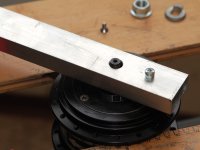docnjoj
1 GW
Endlessly wrote
Unfortunately I have the latter controller/meter combo.
otherDoc
Did you check the assistance level of the display?
My Lishui sine plus the KM-5S combo does limit throttle by the chosen level of assistance. Its only in "power" mode that you get full torque and speed
This is not the case with the King Meter (sine or rectangular) plus LCD3 combo. There throttle is completely independant form chosen level of assistance
Unfortunately I have the latter controller/meter combo.
otherDoc




